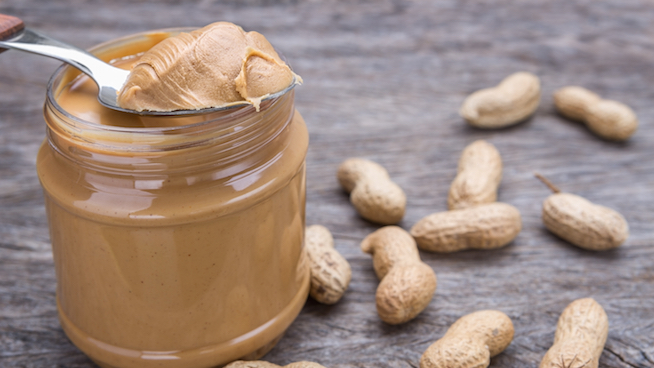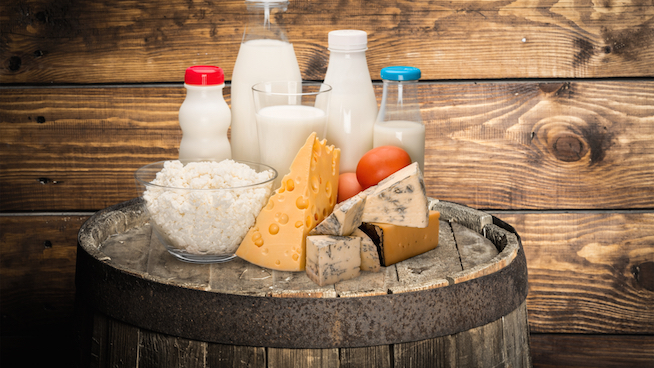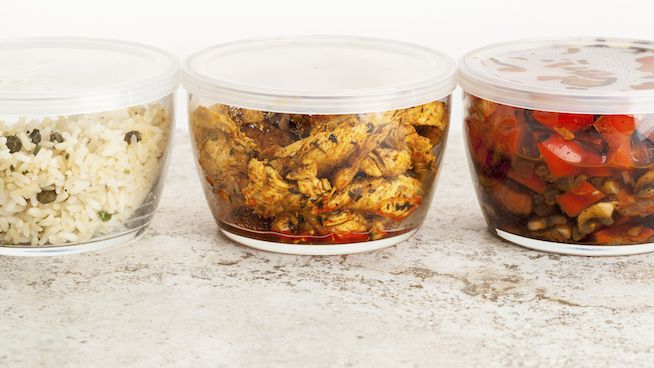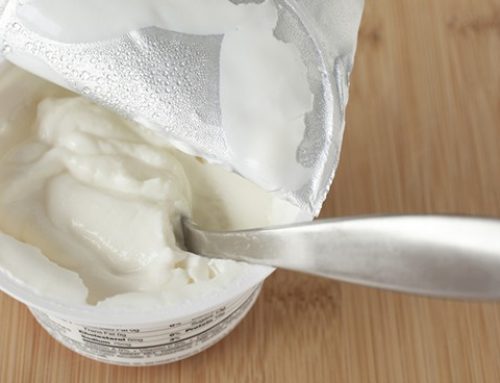Is Peanut Butter Actually Healthy?
What would we do without peanut butter?
Ever since it was first introduced at the 1904 World’s Fair in St. Louis, Americans have had a love affair with peanut butter. And why not? It’s delicious, affordable and versatile. But is it healthy? Considering the base of peanut butter is ground peanuts, you’d like to believe so. However, not all peanut butters are created equal. While certain peanut butters can be an easy way to add protein, fiber and healthy fats to a meal or snack, other varieties veer more into the category of junk food.
Here’s what you need to know about peanut butter and how to get the most out of this popular spread.
Let’s start things off by examining the most popular peanut butter brand in America—Jif. According to U.S. Census Data and the Simmons National Consumer Survey, 112.86 million Americans consumed Jif peanut butter in 2016.
With that in mind, let’s examine the nutrition facts for a serving (two tablespoons) of Jif Creamy Peanut Butter:
190 calories, 16 grams of fat, 2.5 grams of saturated fat, 0mg cholesterol, 140mg sodium, 8 grams total carbohydrate, 2 grams of dietary fiber, 3 grams of sugar (including 2 grams of added sugar), 7 grams of protein
The ingredients list is roasted peanuts, sugar, molasses, fully hydrogenated vegetable oils (rapeseed and soybean), mono and diglycerides, salt.
Now, let’s compare those numbers to one of the healthiest peanut butters available—Smuckers Natural Creamy Peanut Butter. One reason this brand is widely hailed as a nutritious choice is because of its simple ingredients list—it contains nothing more than ground peanuts and a pinch of salt. The nutrition facts for a serving (two tablespoons):
200 calories, 16 grams of fat, 2.5 grams of saturated fat, 0mg cholesterol, 105mg sodium, 6 grams of total carbohydrate, 2 grams of dietary fiber, 1 gram of sugar, 8 grams of protein
There’s not all that much difference in terms of nutrition facts between these two varieties. Both are calorically-dense options, meaning they pack a high number of calories into a relatively small volume of food. This isn’t a bad thing—nuts, seeds and legumes are naturally calorically-dense foods, so it follows that any butter or spread made with them will be, too. Many of the calories in peanut butter can be attributed to the fat found in peanuts. Since one gram of fat contains 9 calories, both of these varieties contain 144 calories from fat per serving.
About half of the fat found in peanuts is monounsaturated fat and roughly 30% is polyunsaturated fat. While it is possible to overindulge on these fats, they’re commonly known as “healthy fats” for the benefits they offer. In moderation, monounsaturated fats help to reduce blood pressure and protect against heart disease. They can also help the body better absorb vitamins and more efficiently use protein. Polyunsaturated fats can reduce blood cholesterol levels and lower the risk of heart disease and strokes. So while the calorie count might look high, the presence of healthy fats is a big reason why.
Though salt is a common ingredient in peanut butter, neither variety is particularly high in sodium. Two grams of dietary fiber per serving is a big plus. Fiber is one of the most neglected nutrients in the American diet, as the average American eats just 10 to 15 grams per day. The National Institutes of Health recommends teens and adults should eat between 20 and 38 grams of fiber per day. Fiber helps break down foods for easier digestion, maintains good bowel health, lowers cholesterol levels and helps you feel fuller longer. High-fiber diets have been linked to positive outcomes such as a reduced risk of diabetes and heart disease. Fiber also slows down how quickly the body absorbs sugar, which helps keep your blood sugar relatively stable (meaning less risk of a sugar crash). When you pair peanut butter with other high-fiber options—such as an apple (one large apple contains 5 grams of fiber) or whole-wheat bread (each slice contains 2 grams of fiber)—you’ve got a healthy, fiber-filled snack.
Both varieties are also high in protein, which is to be expected of peanut butter. Protein is one of the most important nutrients for athletes. High-quality protein provides the amino acids that muscles need to repair and rebuild, allowing you to recover from exercise and get stronger over time. The body can also use protein as a source of energy.
Neither variety is stuffed with sugar, but the fact that the natural peanut butter doesn’t contain any added sugar is an obvious advantage. We’ve written at length about why added sugar is one of biggest dangers in the modern American diet. Diets high in added sugar have been linked to obesity, type 2 diabetes, heart disease, tooth decay, cancer and depression. The America Heart Association recommends a limit of 24 grams of added sugar per day for women and 36 grams per day for men.
So, what have we found? For one, there’s not a huge difference in terms of nutrition facts between these two peanut butters despite one containing a few more ingredients than the other. The natural peanut butter definitely has an edge, but it’s not as significant as you may have thought.
However, there are certain peanut butters that should be avoided entirely. You want to keep the ingredients as simple as possible, so be extra cautious about picking any peanut butter that includes additional flavors. For example, Peanut Butter & Co.’s “Cinnamon Raisin Swirl” peanut butter contains 9 grams of sugar per serving. Consuming that much added sugar essentially negates the other benefits peanut butter can offer.
But the more basic peanut butters certainly appear to be nutritious based off their nutrition facts. This observational takeaway is bolstered by a number of studies which have found peanut butter to offer a variety of health benefits.
A 2015 study published in the journal JAMA Internal Medicine looked at how consumptions of nuts, including peanuts and peanut butter, affected risk of death in 200,000 participants. These participants included low-income Americans of both European and African descent and Chinese individuals in Shanghai, China. The authors concluded that “nut consumption was associated with decreased overall and cardiovascular disease mortality across different ethnic groups and among individuals from low socioeconomic status groups. Consumption of nuts, particularly peanuts given their general affordability, may be considered a cost-effective measure to improve cardiovascular health.”
A 2013 study published in the British Journal of Nutrition found that including peanut butter with breakfast helped obese women decrease their appetite and stabilize their blood sugar throughout the day. A 2002 study from the Harvard School of Public Health found that consuming one tablespoon of peanut butter five or more times a week led to a 21% reduced risk of developing type 2 diabetes.
So, is peanut butter actually healthy? Yes. As long as you don’t have a peanut allergy or sensitivity, peanut butter can certainly play a role in a healthy diet. The more simple the peanut butter is (ideally it should just contain peanuts and salt), the healthier it usually will be. But as long as you stay away from any varieties loaded with added sugar, you should still be able to reap most of the benefits that make peanut butter such a nutritional powerhouse.
READ MORE:
RECOMMENDED FOR YOU
MOST POPULAR
Is Peanut Butter Actually Healthy?
What would we do without peanut butter?
Ever since it was first introduced at the 1904 World’s Fair in St. Louis, Americans have had a love affair with peanut butter. And why not? It’s delicious, affordable and versatile. But is it healthy? Considering the base of peanut butter is ground peanuts, you’d like to believe so. However, not all peanut butters are created equal. While certain peanut butters can be an easy way to add protein, fiber and healthy fats to a meal or snack, other varieties veer more into the category of junk food.
Here’s what you need to know about peanut butter and how to get the most out of this popular spread.
Let’s start things off by examining the most popular peanut butter brand in America—Jif. According to U.S. Census Data and the Simmons National Consumer Survey, 112.86 million Americans consumed Jif peanut butter in 2016.
With that in mind, let’s examine the nutrition facts for a serving (two tablespoons) of Jif Creamy Peanut Butter:
190 calories, 16 grams of fat, 2.5 grams of saturated fat, 0mg cholesterol, 140mg sodium, 8 grams total carbohydrate, 2 grams of dietary fiber, 3 grams of sugar (including 2 grams of added sugar), 7 grams of protein
The ingredients list is roasted peanuts, sugar, molasses, fully hydrogenated vegetable oils (rapeseed and soybean), mono and diglycerides, salt.
Now, let’s compare those numbers to one of the healthiest peanut butters available—Smuckers Natural Creamy Peanut Butter. One reason this brand is widely hailed as a nutritious choice is because of its simple ingredients list—it contains nothing more than ground peanuts and a pinch of salt. The nutrition facts for a serving (two tablespoons):
200 calories, 16 grams of fat, 2.5 grams of saturated fat, 0mg cholesterol, 105mg sodium, 6 grams of total carbohydrate, 2 grams of dietary fiber, 1 gram of sugar, 8 grams of protein
There’s not all that much difference in terms of nutrition facts between these two varieties. Both are calorically-dense options, meaning they pack a high number of calories into a relatively small volume of food. This isn’t a bad thing—nuts, seeds and legumes are naturally calorically-dense foods, so it follows that any butter or spread made with them will be, too. Many of the calories in peanut butter can be attributed to the fat found in peanuts. Since one gram of fat contains 9 calories, both of these varieties contain 144 calories from fat per serving.
About half of the fat found in peanuts is monounsaturated fat and roughly 30% is polyunsaturated fat. While it is possible to overindulge on these fats, they’re commonly known as “healthy fats” for the benefits they offer. In moderation, monounsaturated fats help to reduce blood pressure and protect against heart disease. They can also help the body better absorb vitamins and more efficiently use protein. Polyunsaturated fats can reduce blood cholesterol levels and lower the risk of heart disease and strokes. So while the calorie count might look high, the presence of healthy fats is a big reason why.
Though salt is a common ingredient in peanut butter, neither variety is particularly high in sodium. Two grams of dietary fiber per serving is a big plus. Fiber is one of the most neglected nutrients in the American diet, as the average American eats just 10 to 15 grams per day. The National Institutes of Health recommends teens and adults should eat between 20 and 38 grams of fiber per day. Fiber helps break down foods for easier digestion, maintains good bowel health, lowers cholesterol levels and helps you feel fuller longer. High-fiber diets have been linked to positive outcomes such as a reduced risk of diabetes and heart disease. Fiber also slows down how quickly the body absorbs sugar, which helps keep your blood sugar relatively stable (meaning less risk of a sugar crash). When you pair peanut butter with other high-fiber options—such as an apple (one large apple contains 5 grams of fiber) or whole-wheat bread (each slice contains 2 grams of fiber)—you’ve got a healthy, fiber-filled snack.
Both varieties are also high in protein, which is to be expected of peanut butter. Protein is one of the most important nutrients for athletes. High-quality protein provides the amino acids that muscles need to repair and rebuild, allowing you to recover from exercise and get stronger over time. The body can also use protein as a source of energy.
Neither variety is stuffed with sugar, but the fact that the natural peanut butter doesn’t contain any added sugar is an obvious advantage. We’ve written at length about why added sugar is one of biggest dangers in the modern American diet. Diets high in added sugar have been linked to obesity, type 2 diabetes, heart disease, tooth decay, cancer and depression. The America Heart Association recommends a limit of 24 grams of added sugar per day for women and 36 grams per day for men.
So, what have we found? For one, there’s not a huge difference in terms of nutrition facts between these two peanut butters despite one containing a few more ingredients than the other. The natural peanut butter definitely has an edge, but it’s not as significant as you may have thought.
However, there are certain peanut butters that should be avoided entirely. You want to keep the ingredients as simple as possible, so be extra cautious about picking any peanut butter that includes additional flavors. For example, Peanut Butter & Co.’s “Cinnamon Raisin Swirl” peanut butter contains 9 grams of sugar per serving. Consuming that much added sugar essentially negates the other benefits peanut butter can offer.
But the more basic peanut butters certainly appear to be nutritious based off their nutrition facts. This observational takeaway is bolstered by a number of studies which have found peanut butter to offer a variety of health benefits.
A 2015 study published in the journal JAMA Internal Medicine looked at how consumptions of nuts, including peanuts and peanut butter, affected risk of death in 200,000 participants. These participants included low-income Americans of both European and African descent and Chinese individuals in Shanghai, China. The authors concluded that “nut consumption was associated with decreased overall and cardiovascular disease mortality across different ethnic groups and among individuals from low socioeconomic status groups. Consumption of nuts, particularly peanuts given their general affordability, may be considered a cost-effective measure to improve cardiovascular health.”
A 2013 study published in the British Journal of Nutrition found that including peanut butter with breakfast helped obese women decrease their appetite and stabilize their blood sugar throughout the day. A 2002 study from the Harvard School of Public Health found that consuming one tablespoon of peanut butter five or more times a week led to a 21% reduced risk of developing type 2 diabetes.
So, is peanut butter actually healthy? Yes. As long as you don’t have a peanut allergy or sensitivity, peanut butter can certainly play a role in a healthy diet. The more simple the peanut butter is (ideally it should just contain peanuts and salt), the healthier it usually will be. But as long as you stay away from any varieties loaded with added sugar, you should still be able to reap most of the benefits that make peanut butter such a nutritional powerhouse.
READ MORE:













